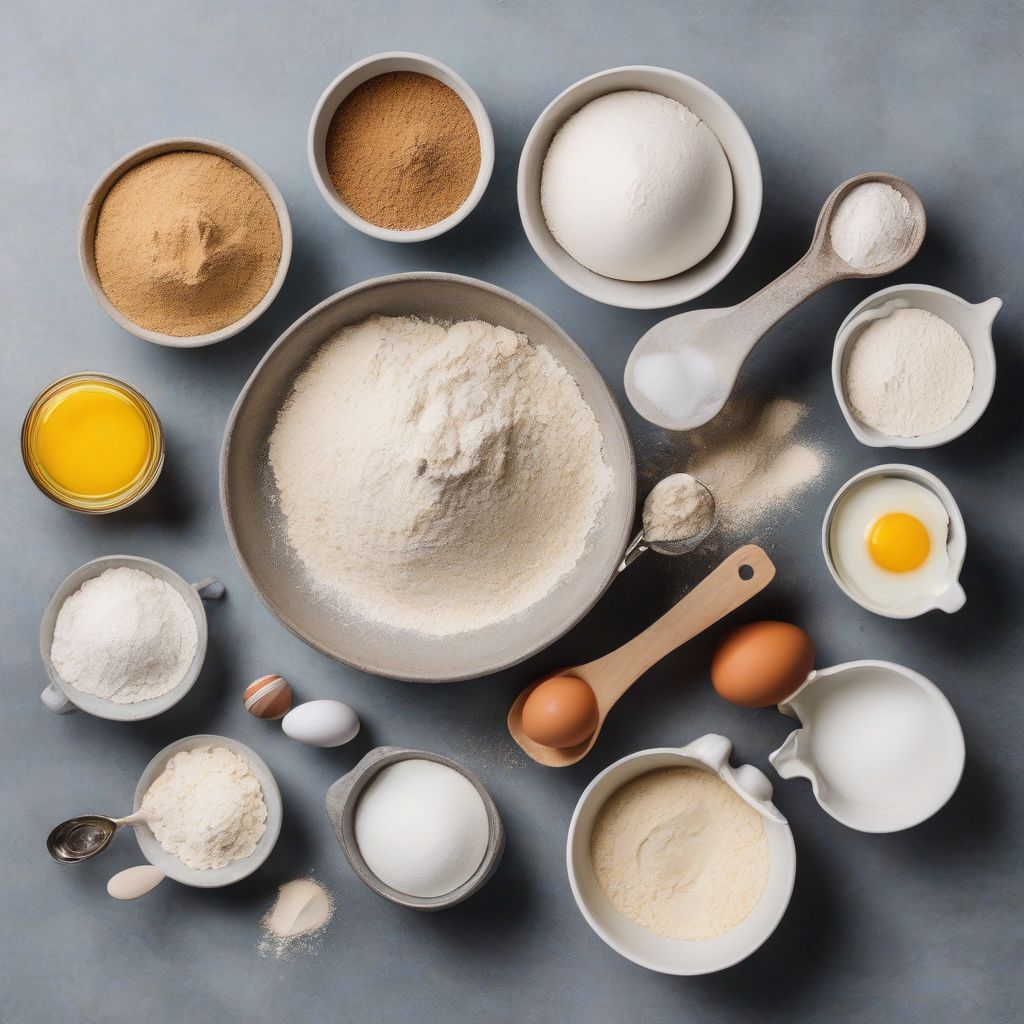Have you ever dreamt of indulging in freshly baked goodies that are not only delicious but also align with your dietary needs? It might sound like a distant dream if you’re avoiding traditional wheat flour, but I’m here to tell you that dream can be your reality! Baking with alternative flours opens up a whole new world of possibilities, allowing you to enjoy your favorite treats while embracing a wider variety of flavors and textures.
As a nutritionist and meal prep coach, I’ve spent years guiding people through the exciting, and sometimes daunting, world of alternative baking. The key is understanding the unique properties of each flour and knowing how to use them effectively. This guide will equip you with the best tips and tricks to confidently bake with alternative flours and achieve delicious results every time.
Understanding Alternative Flours: A Quick Overview
Before we dive into the tips, let’s familiarize ourselves with some popular alternative flours and their characteristics:
Gluten-Free Flours:
- Almond Flour: Made from finely ground almonds, this flour is naturally gluten-free, low in carbs, and high in protein and healthy fats. It lends a subtly sweet, nutty flavor and moist texture to baked goods.
- Coconut Flour: This flour, derived from dried coconut meat, is another great gluten-free option that’s high in fiber and low in carbs. It absorbs a significant amount of liquid and adds a slightly sweet coconutty taste.
- Brown Rice Flour: A mild-flavored, gluten-free flour made from ground brown rice. It has a slightly gritty texture and is a good source of fiber and nutrients.
- Oat Flour: Made from ground oats, this flour is naturally gluten-free (if certified) and offers a mild, slightly sweet flavor. It’s known for its binding properties and adds a chewy texture to baked goods.
Gluten-Containing Flours:
- Spelt Flour: An ancient grain, spelt is a close relative of wheat but with a slightly sweeter, nuttier flavor. It’s easier to digest than modern wheat for some individuals and contains gluten, making it suitable for yeasted bread recipes.
The Best Tips for Baking with Alternative Flours
1. Start with Tried and True Recipes
When venturing into the world of alternative flours, it’s best to begin with recipes specifically designed for them. This will help you understand the unique properties of each flour and how they interact with other ingredients. Many online resources and cookbooks are dedicated to gluten-free and alternative baking.
2. Measure Carefully
Alternative flours often have different densities than wheat flour, so measuring by volume (using cups) can lead to inconsistent results. Invest in a kitchen scale and measure your flours by weight for greater accuracy.
3. Don’t Be Afraid to Experiment
Once you feel comfortable with basic recipes, don’t hesitate to experiment with substituting alternative flours in your favorite traditional recipes. Start by replacing a small portion of wheat flour with an alternative flour and gradually increase the ratio as you gain confidence.
4. Binding Power: The Importance of Eggs and Binders
Gluten-free flours often lack the gluten protein that gives traditional baked goods their structure. To compensate for this, you’ll need to incorporate binding agents:
- Eggs: Eggs act as a binder and add moisture to gluten-free baking. Generally, you’ll need to use more eggs in gluten-free recipes compared to their wheat-based counterparts.
- Flaxseed Meal or Chia Seeds: When mixed with water, flaxseed meal and chia seeds create a gel-like substance that helps bind ingredients together. Use 1 tablespoon of flaxseed meal or chia seeds mixed with 3 tablespoons of water to replace one egg.
5. Adjust Liquid Ratios
Alternative flours absorb liquid differently than wheat flour. You may need to adjust the amount of liquid in your recipe, adding more or less depending on the flour you’re using. Pay close attention to the consistency of your batter or dough and make adjustments as needed.
6. Temperature and Time Adjustments
Baking times and temperatures may need to be adjusted when using alternative flours. Start by checking for doneness a few minutes earlier than the recipe states and adjust accordingly.
7. Don’t Overmix
Overmixing can lead to tough or dense baked goods, especially when working with gluten-free flours. Mix your batter or dough just until the ingredients are combined.
8. Embrace New Textures and Flavors
Alternative flours introduce a world of unique textures and flavors. Embrace the differences! Some flours, like almond flour, yield a naturally moist and tender crumb, while others, like coconut flour, create a chewier texture. Experiment and discover your favorites.
9. Proper Storage
Store your alternative flours in airtight containers in a cool, dark place to maintain freshness and prevent spoilage. Some flours, like almond flour, benefit from refrigeration to preserve their flavor and prevent rancidity.
 Alternative Flour Baking
Alternative Flour Baking
[amazon bestseller=”alternative flour cookbook”]
Conclusion
Baking with alternative flours opens up a world of possibilities for creating delicious and nutritious treats that cater to a variety of dietary needs. By understanding the unique properties of each flour and following these tips, you’ll be well on your way to baking success!
Remember, practice makes perfect. Don’t be afraid to experiment and have fun exploring the world of alternative flours. You might just discover your new favorite baking ingredient!
Now I’d love to hear from you! Have you tried baking with alternative flours? What are your favorite recipes or tips? Share your experiences in the comments below!
